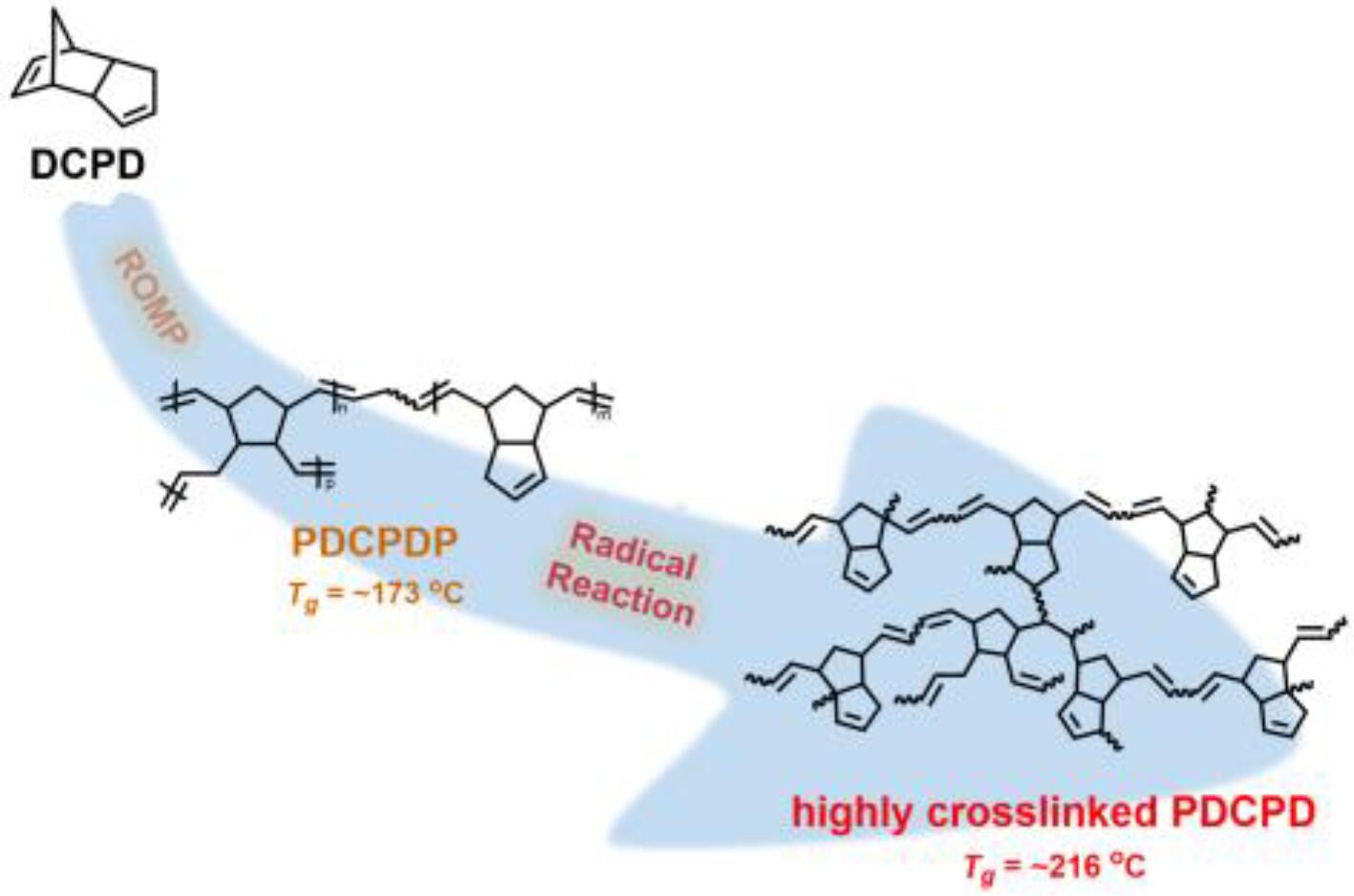求助PDF
{"title":"Achieving performance-advantaged polydicyclopentadiene via sequential ring-opening metathesis polymerization and radical reaction","authors":"Qingyan Zhan, Fei Huangfu, Po Yang","doi":"10.1002/pi.6619","DOIUrl":null,"url":null,"abstract":"<p>Herein, we develop an approach to achieve performance-advantaged polydicyclopentadiene (PDCPD) via sequential ring-opening metathesis polymerization (ROMP) and radical reactions. We mix dicyclopentadiene (DCPD), Grubbs' catalyst and radical initiator in one pot, and then polymerize first at low temperature by ROMP and initiate radical reactions at elevated temperature. As a result of our strategy, the crosslink density of PDCPD increases, leading to outstanding performance. For instance, the glass transition temperature <i>T</i><sub>g</sub> of ROMP-prepared PDCPD is <i>ca</i> 155–175 °C, whereas the <i>T</i><sub>g</sub> of PDCPD prepared by this strategy can be increased to 191 °C and can be further enhanced to 216 °C after polymerization at 250 °C. We believe this can help researchers design and synthesize high performance ROMP-derived polymers and apply PDCPD in harsh conditions. © 2024 Society of Industrial Chemistry.</p>","PeriodicalId":20404,"journal":{"name":"Polymer International","volume":"73 6","pages":"464-470"},"PeriodicalIF":3.6000,"publicationDate":"2024-02-16","publicationTypes":"Journal Article","fieldsOfStudy":null,"isOpenAccess":false,"openAccessPdf":"","citationCount":"0","resultStr":null,"platform":"Semanticscholar","paperid":null,"PeriodicalName":"Polymer International","FirstCategoryId":"92","ListUrlMain":"https://scijournals.onlinelibrary.wiley.com/doi/10.1002/pi.6619","RegionNum":4,"RegionCategory":"化学","ArticlePicture":[],"TitleCN":null,"AbstractTextCN":null,"PMCID":null,"EPubDate":"","PubModel":"","JCR":"Q2","JCRName":"POLYMER SCIENCE","Score":null,"Total":0}
引用次数: 0
引用
批量引用
Abstract
Herein, we develop an approach to achieve performance-advantaged polydicyclopentadiene (PDCPD) via sequential ring-opening metathesis polymerization (ROMP) and radical reactions. We mix dicyclopentadiene (DCPD), Grubbs' catalyst and radical initiator in one pot, and then polymerize first at low temperature by ROMP and initiate radical reactions at elevated temperature. As a result of our strategy, the crosslink density of PDCPD increases, leading to outstanding performance. For instance, the glass transition temperature T g of ROMP-prepared PDCPD is ca 155–175 °C, whereas the T g of PDCPD prepared by this strategy can be increased to 191 °C and can be further enhanced to 216 °C after polymerization at 250 °C. We believe this can help researchers design and synthesize high performance ROMP-derived polymers and apply PDCPD in harsh conditions. © 2024 Society of Industrial Chemistry.
通过顺序 ROMP 和自由基反应实现性能优越的聚双环戊二烯
在此,我们开发了一种通过顺序开环偏聚(ROMP)和自由基反应实现性能优越的聚双环戊二烯(PDCPD)的方法。将双环戊二烯(DCPD)、格拉布斯催化剂和自由基引发剂混合在一个罐中,然后首先在低温下通过 ROMP 进行聚合,并在高温下引发自由基反应。由于采用了我们的策略,PDCPD 的交联密度得以提高,从而实现了出色的性能。例如,ROMP 制备的 PDCPD 的玻璃化转变温度约为 155-175 ℃;而采用这种策略制备的 PDCPD 的玻璃化转变温度可提高到 191 ℃,在 250 ℃ 下聚合后可进一步提高到 216 ℃。我们相信这有助于研究人员设计和合成高性能 ROMP 衍生聚合物,并将 PDCPD 应用于苛刻的条件下。
本文章由计算机程序翻译,如有差异,请以英文原文为准。



 求助内容:
求助内容: 应助结果提醒方式:
应助结果提醒方式:


